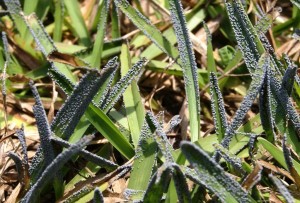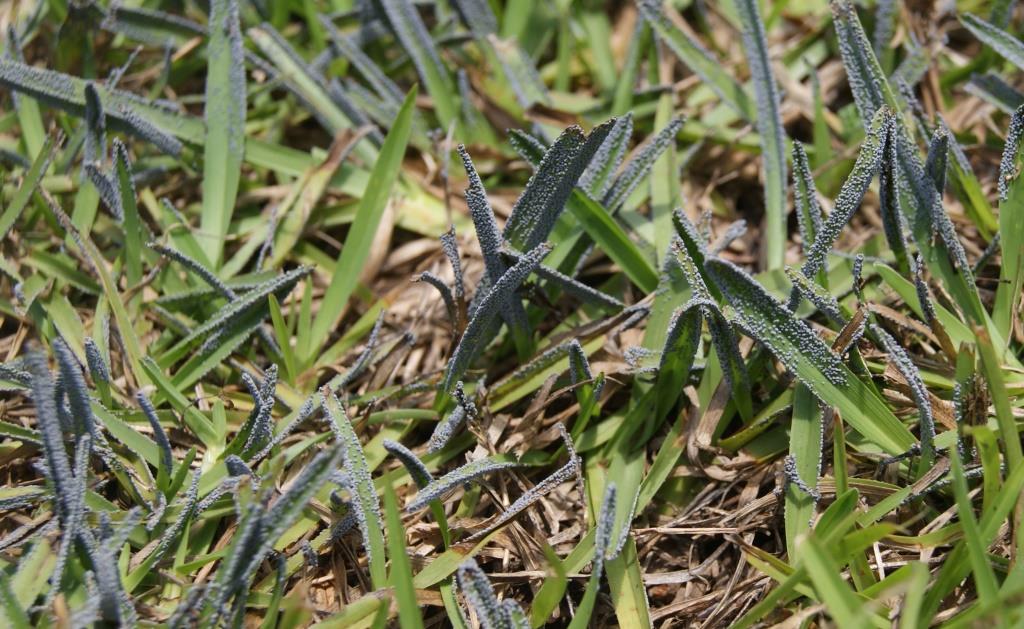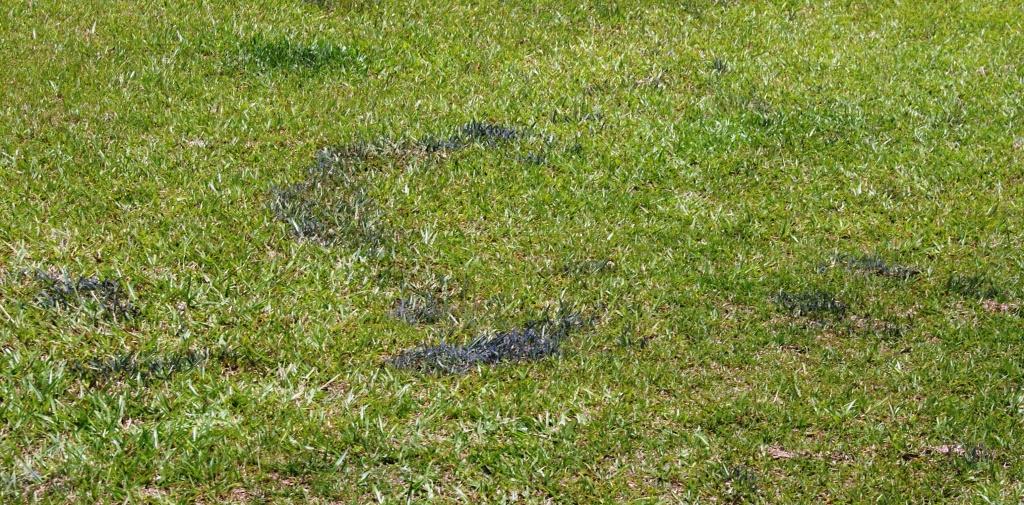
Although black or white streaks are shocking when they appear on an otherwise healthy lawn, slime molds are rarely harmful.
Slime mold is actually caused by the reproductive structures of an array of different organisms, classified as plasmodia or Protista, which are regularly present in the soil. They are often mistaken for fungi. The different types are referred to as myxomycetes or dictyosteliomycetes. They usually appear on warm humid days in late spring or early summer after extended periods of rain. This extended period of heat and humidity, as is currently being experienced in the Florida Panhandle, initiates the perfect climate for slime mold development.
While regularly present in the soil, they usually make a visual appearance on warm humid days in late spring or early summer after extended periods of rain. This extended period of heat and humidity, currently being experienced in the Florida Panhandle, initiates the perfect climate for slime mold development.
As depicted in the picture, slime mold makes the lawn look like it was just spray-painted with black or grey paint. They can sometimes be pink, white, yellow or brown as well. The round fruiting bodies, called sporangia, carry the spores which will give rise to the next generation of the mold. After a few days the sporangia will shrivel up, release the spores and leave no noticeable trace on the lawn.

Currently, no fungicide exists to control slime mold because chemical control is not necessary. An excellent method to speed up the dissipation of slime mold is to mow or rake the lawn lightly. This will disturb the spores and hasten their departure. Another effective removal method is to spray the lawn with a forceful stream of water. This process washes off the slime mold sporangia and restores the lawn to its former dark green beauty.
Excessive thatch accumulation also increases the probability of slime mold occurrence.
For more information consult your local county extension agent consult the UF / IFAS Slime Mold Fact Sheet, or read the Alabama Cooperative Extension publication Slime Mold on Home Lawns.

 1
1
